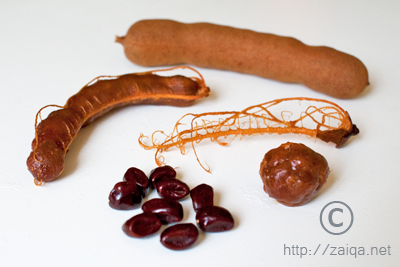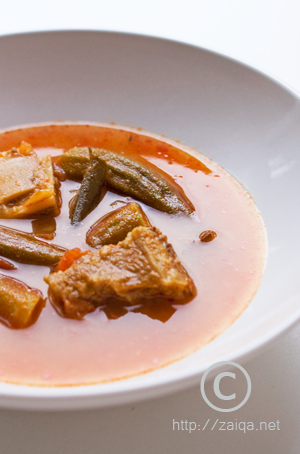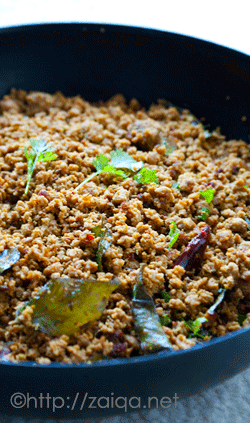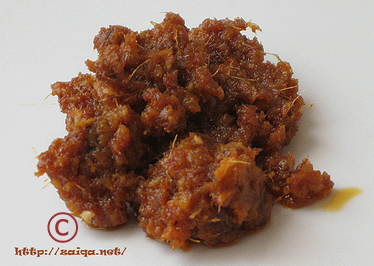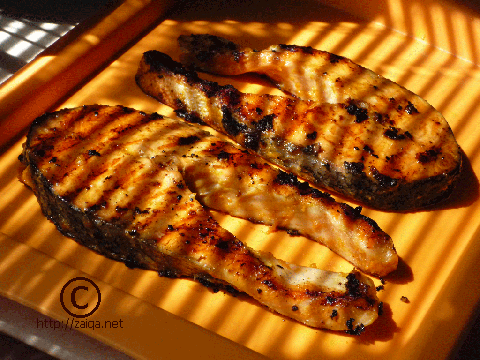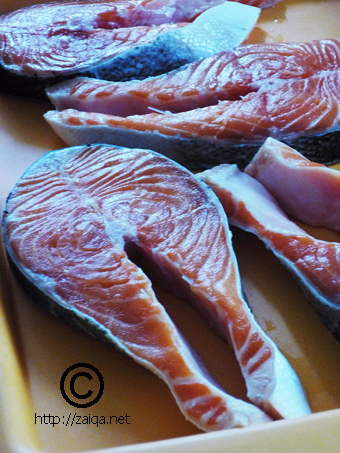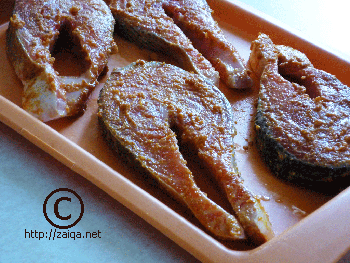It has been raining since a few days here, and I was craving for some snacks. Palak Pakodi with Til ki Chutney is what I prepared today and we enjoyed it الحمد لله along with chai.
Palak ki Pakodi – Spinack Fritters
Ingredients:
Spinach – 100 gms
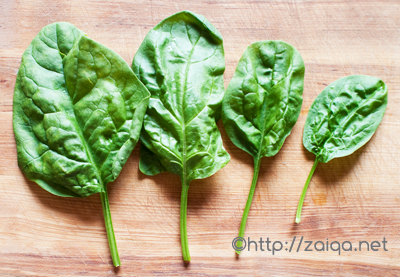
Palak – Spinach
For the batter:-
Gram flour/Besan – 1 cup
Cool fresh water – 1 cup
Red Chilli powder – 1 tsp
Salt – 1 tsp
Turmeric – 1/4 tsp
Ginger garlic paste – 1 tsp

Palak ki Pakodi – Spinack Fritters
Method:
1. Heat oil in a kadai to deep fry the fritters.
2. In a bowl, prepare the batter. Mix all the ingredients under the heading for the batter until the batter is smooth. Keep aside.
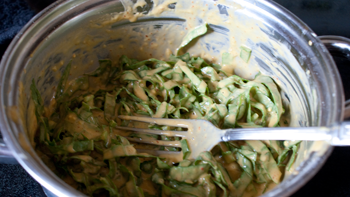
Spinach strips in batter
3. Wash and pat dry the spinach thoroughly. Discard stems and pile the spinach one above the other. Cut into strips and add it to the batter. Using a fork mix well and gently lift a small amount in the fork and drop it into the hot oil in the kadai. Deep fry on both sides until golden brown in color, around 3-5 minutes.
4. Remove the fritters into a large wire mesh strainer for the excess oil to drip off.
Til ki Chutney – Sesame seed Chutney
Ingredients:
Sesame seeds/Til – 1/2 cup
Small green chillies – 5, stems discarded, roughly chopped
Tamarind concentrate – 2 tbsp
Fresh Chopped Cilantro/Kothmir – 1 tbsp
Fresh Mint leaves/Pudina – 6 leaves
Garlic cloves – 2
Salt – to taste
Fresh cool water – 3/4 cup
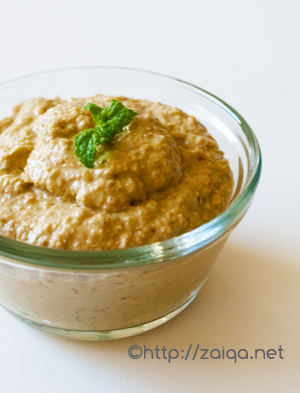
Til ki Chutney – Sesame seed Chutney
Method:
1. In a pan at medium high heat, dry roast the sesame seeds until lightly golden brown in color. Remove the pan from heat and keep aside to cool.

Dry roasted Sesame seeds
2. Once the sesame seeds are completely cooled, add the rest of the ingredients and grind in a blender until smooth. Add more water if you need. Adjust salt to taste.
3. Prepare baghaar/tempering in a pan- pour 1 tbsp oil in a frying pan at medium hight heat. Add 1 tsp cumin seeds, 2 dry red chillies, and a few curry leaves. As they crackle, remove from heat and mix into the chutney. Serve.
Dip the Spinach fritters into the chutney and enjoy as a snack.
I also prepare this snack along with the chutney quite usually in Ramadan at Iftaar. This is my entry to the ‘Hyderabadi Ramadan Food Festival ’09’ that I am hosting on my blog.
Do send me your entries as soon as possible before Ramadan starts. The deadline is 20th August ‘09.
Luv,
Mona
